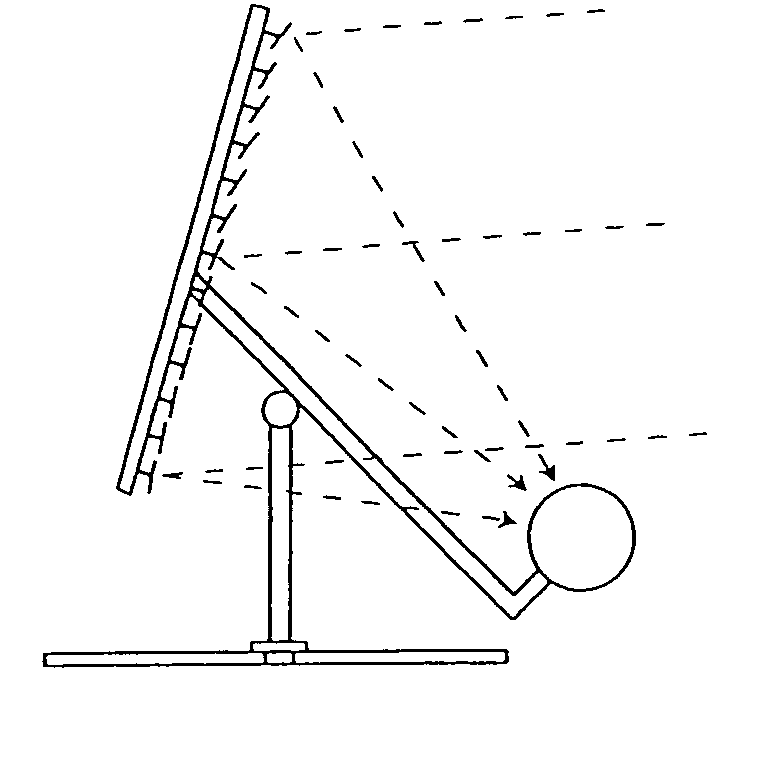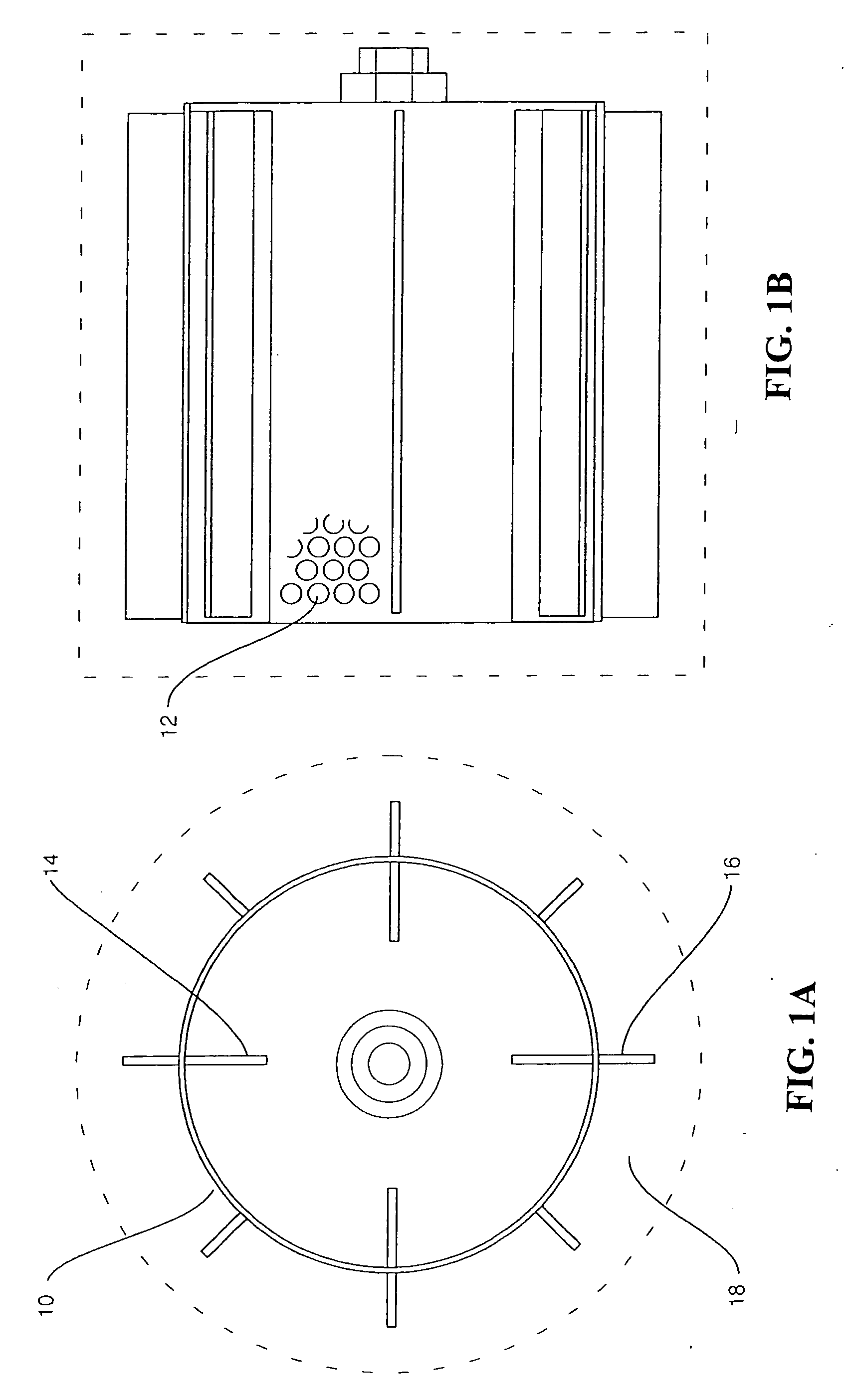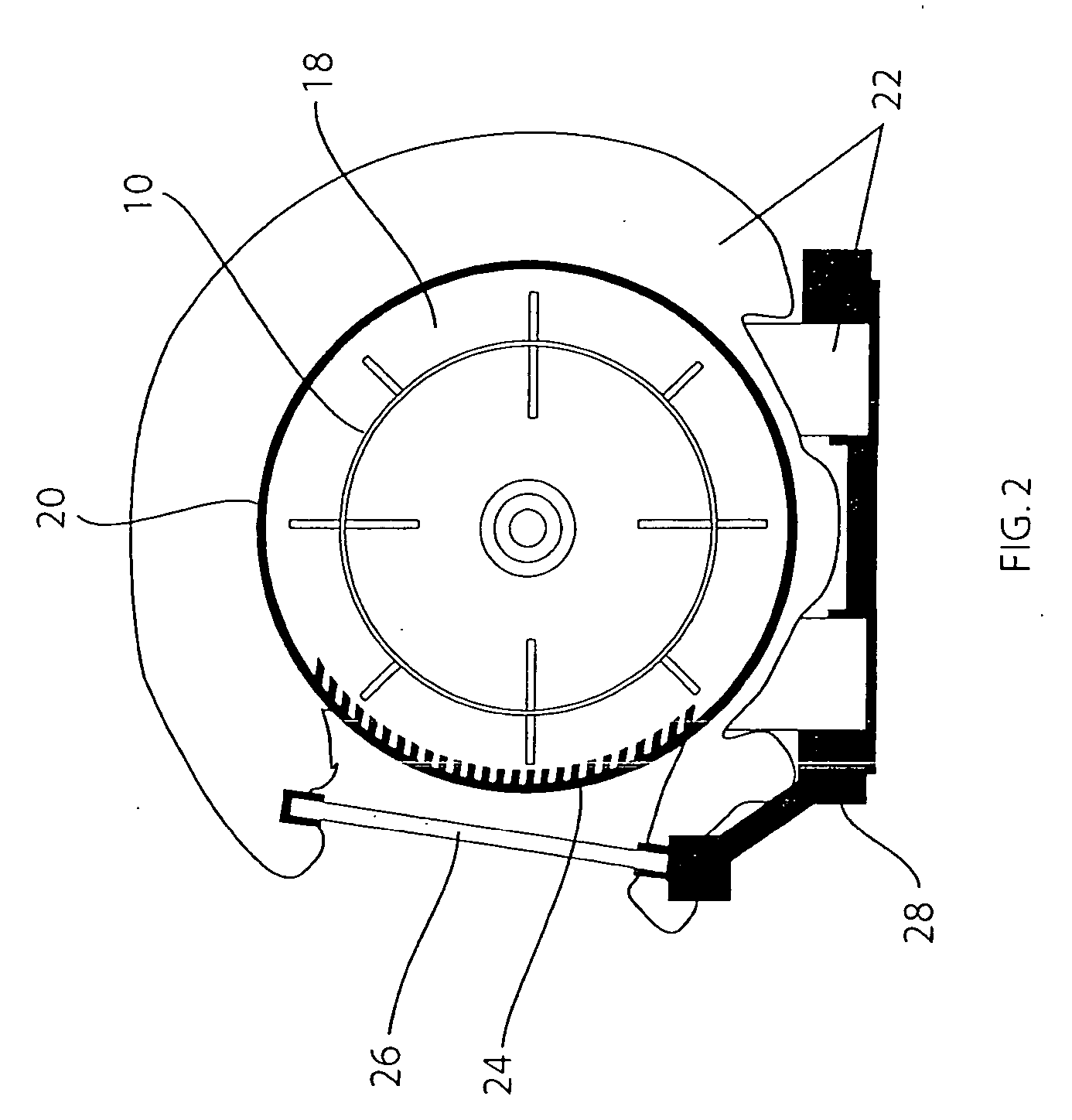Method and apparatus for roasting coffee beans by means of concentrated solar thermal energy
a technology of concentrated solar thermal energy and coffee beans, which is applied in the field of coffee roasting, can solve the problems of insufficient robustness of the system, insufficient roaster capacity, and general energy cost of electrical heating, and achieves precise initial weight balancing, excellent focus, and maximize the effect of roaster efficiency
- Summary
- Abstract
- Description
- Claims
- Application Information
AI Technical Summary
Benefits of technology
Problems solved by technology
Method used
Image
Examples
third embodiment
[0096] The roasting drum is supported and turned by a stainless steel shaft attached to the closed end, pictured in FIGS. 3A and 3B. The shaft (30) is mounted on a support frame (28) by means of one or more bearings (34) set outside the confined heated air volume. The shaft is turned by a 12-36 volt DC motor (36). In an alternate embodiment, the shaft is turned by an AC motor connected to an electronic speed controller. The motor is geared for high torque low speed operation for rotational speeds between 20 and 60 RPM. The motor may be provided with a small dedicated DC cooling fan (38) to prevent overheating. The motor may be coupled to the shaft by means of a universal joint (39), which enables satisfactory rotary coupling and minimizes heat transfer from the shaft to the motor. In an alternate embodiment, the shaft is turned by a chained sprocket. A motor having a sprocket is linked to the shaft's sprocket by a chain. In a third embodiment, the motor is coupled to the shaft by me...
second embodiment
[0103] In a second embodiment, the end of the thermocouple may be inserted through the door of the roasting chamber. This allows for an accurate direct reading of the temperature within the roasting drum.
[0104] In a third embodiment, an IR thermometer system may be employed to take direct readings of the bean temperature through a port in the front of the roaster.
Electrical System
[0105] In one embodiment, the drive and fan motors are operated by a low voltage direct-current power supply. The power supply may consist of an external system that includes one or more photovoltaic panels, providing suitable voltage to drive the motors, a charge-controlled battery backup system, and a motor control panel. The motor control panel contains switches that control the external blower fan and the drive motor for the inner drum. Means are provided for electronically controlling the rotational speed of the inner-drum drive motor. This may be accomplished by a large variable resistor or a solid...
first embodiment
[0119] The circulating fan and other electrical components may be powered by means of collected solar energy in the same manner described in the drum roaster system.
2. Fluid Bed Roaster Module Embodiment #2, Compact System
[0120] A compact embodiment of a solar heated fluid bed roaster system is shown in a system schematic diagram in FIG. 19D. In this system, fresh air may be taken in through a port connected to an intake valve (196) and forced by a high temperature circulating fan (33) into the receiver plate module (24). Air is heated as it passes through receiver plate, which is directly incorporated into the bottom of the roasting chamber, and is blown into the roasting chamber (192), where it suspends beans in an upward draft of air. The air and chaff from the beans then pass out of the roasting chamber through a small wire mesh filtration system (199), which allows the chaff to settle into a tray. The air may then pass out of the system through a flue at the top, or may be di...
PUM
 Login to View More
Login to View More Abstract
Description
Claims
Application Information
 Login to View More
Login to View More - R&D
- Intellectual Property
- Life Sciences
- Materials
- Tech Scout
- Unparalleled Data Quality
- Higher Quality Content
- 60% Fewer Hallucinations
Browse by: Latest US Patents, China's latest patents, Technical Efficacy Thesaurus, Application Domain, Technology Topic, Popular Technical Reports.
© 2025 PatSnap. All rights reserved.Legal|Privacy policy|Modern Slavery Act Transparency Statement|Sitemap|About US| Contact US: help@patsnap.com



